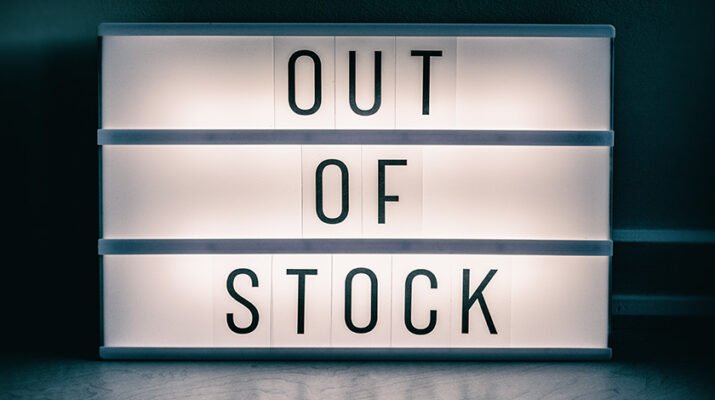By Deborah Jeanne Sergeant
Depending upon the drug, many people who take medication must wait three or four days to fill their prescriptions at their local pharmacy. Those who rely on mail order pharmacies may receive their medication mere days before they’re out of drugs instead of weeks in advance.
The American Society for Health-System Pharmacists recently stated that there are more than 300 medications experiencing a shortage, representing the highest level since 2014.
The ASHP states on its website (www.ashp.org) that reasons for the shortage include product quality, deviations from good manufacturing processes and supply chain problems.
Since it is not affiliated with a chain, Parker Pharmacy in Buffalo addresses the problem by calling around — not a strategy typical of chain stores, according to Parker’s pharmacist Barb Madison.
“Being independent, I can find several different wholesalers,” she said.
This has helped her prevent turning patients away. She has only a few medications that have been difficult to obtain.
Unfortunately, independent pharmacies are struggling. Madison said that an average of 10 close per day nationwide. This can potentially make it more difficult for patients to find what they need.
Like others like her, Madison has expanded into different revenue streams to sell to help keep the pharmacy open, such as a large gift area.
“People told me the chain stores weren’t getting antibiotics in four days during the beginning of the pandemic and I had it,” Madison said. “I have a wholesaler who emails me at the beginning of the week about shortages and what’s available so I can get it. It’s all about who you deal with. Chains have their own warehouses, so they’re stuck.”
Sometimes patients call independent pharmacies looking for their medication, such as Faris Pharmacy in Rochester.
“We have people calling every week trying to find medication — multiple people,” said pharmacist Kaleigh Gregory.
If their suppliers do not have it in stock, the pharmacists cannot obtain it readily for their customers.
One example of a drug shortage affecting hospitals is Stadol, used for labor and delivery patients. Several types of chemotherapy drugs are among those difficult to obtain.
If there aren’t alternatives, that becomes a difficult issue for patients. Many want to stay on the medication they’re using, but if it’s not available, they may have to accept side effects they don’t want.
Another strategy is talking with different suppliers to find medication. However, prices vary among suppliers. This has caused increased spending for the hospital or pharmacy. Patients with insurance should still see the same copays.
Eventually, this strategy can lead to higher premiums as insurance companies recoup their costs.
Lack of raw materials and workforce issues may be part of the reason that drugmakers aren’t supplying enough. However, some drugmakers cease production of what they deem less popular medication. Or if a drug is approved for multiple uses, it becomes scarce as physicians prescribe it at higher rates than ever and manufacturers don’t keep up with demand.
List of Drugs Affected
 American Society for Health-System Pharmacists states on its website that the drug classes in short supply include “local anesthetics and basic hospital drugs albuterol solution, common oral and ophthalmic products, and ADHD treatments are affecting large numbers of organizations and patients.
American Society for Health-System Pharmacists states on its website that the drug classes in short supply include “local anesthetics and basic hospital drugs albuterol solution, common oral and ophthalmic products, and ADHD treatments are affecting large numbers of organizations and patients.
Chemotherapy drugs, often without alternatives, are increasingly in short supply and have returned to the list of top-five drug classes affected by shortage.”
The ASHP lists on its website (www.ashp.org) the medications in short supply:
Cancer Centers Say Drug Shortages Are Impacting Patient Care
 A new survey of cancer centers find that chemotherapy shortages are affecting most of them, prompting last-minute changes in treatment for numerous types of cancer.
A new survey of cancer centers find that chemotherapy shortages are affecting most of them, prompting last-minute changes in treatment for numerous types of cancer.
About 93% of the centers surveyed said they were experiencing shortages of the drug carboplatin, while 70% were short on cisplatin. Together, these platinum chemotherapies can treat and even cure cancers, including lung, breast, prostate and many leukemias and lymphomas.
“This is an unacceptable situation. We are hearing from oncologists and pharmacists across the country who have to scramble to find appropriate alternatives for treating their patients with cancer right now,” physician Robert Carlson, chief executive officer at National Comprehensive Cancer Network, said in a news release on the widespread shortages.
“We were relieved by survey results that show patients are still able to get lifesaving care, but it comes at a burden to our overtaxed medical facilities. We need to work together to improve the current situation and prevent it from happening again in the future,” Carlson added.
The whole oncology community needs to work together on solutions, NCCN said, as it also called on the federal government, pharmaceutical industry, cancer treatment providers and insurance companies to do their part.
“The causes and solutions to the recurrent anti-cancer drug shortages that deprive oncology patients of optimal therapy are multiple and fixable. Effective solutions require a whole of oncology effort if they are to be successful,” the statement read.
In the survey, NCCN polled 27 NCCN member institutions across the United States from May 23 to 31.

